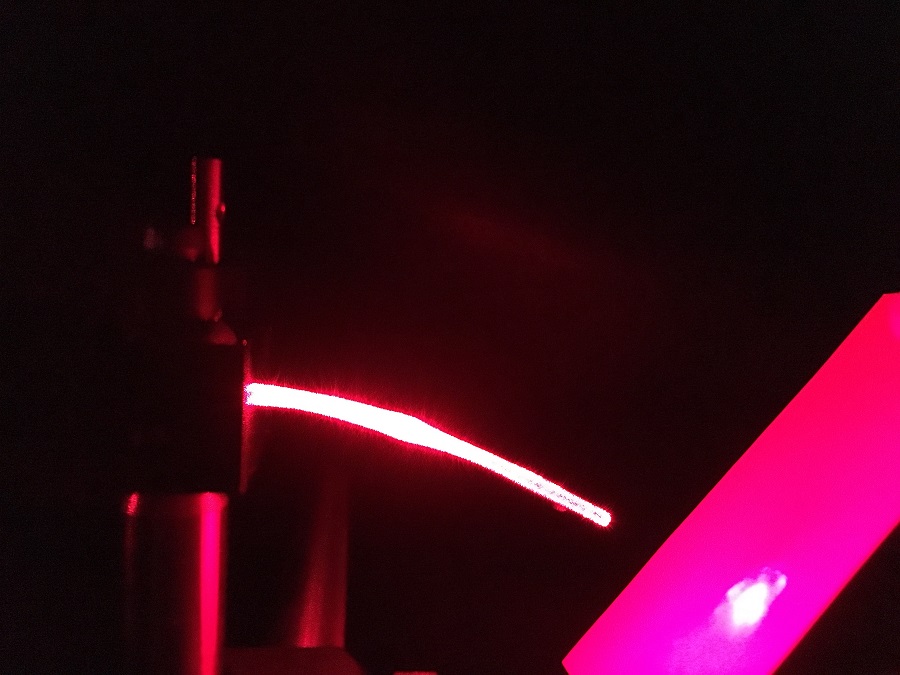In Penn State’s Materials Research Institute, an electrical engineer and a biomaterials engineer have joined their expertise to develop a flexible, biodegradable optical fiber to deliver light into the body for medical applications.
The ability to deliver light into the body is important for laser surgery, drug activation, optical imaging, diagnosis of disease and in the experimental field of optogenetics, in which light is used to manipulate the function of neurons in the brain. Yet, delivering light into the body is difficult and typically requires the implantation of an optical fiber made of glass.
Currently, people are using glass fiber to get light into the biological tissue at depth, but glass is brittle and is not biodegradable. It can break and damage tissue if implanted. Researchers are beginning to look toward flexible polymer fibers as a solution. Yang previously invented a polymer based on citrate, a naturally occurring key ingredient in metabolism, that he developed as a general platform for biomedical applications, such as biodegradable bone screws for bone fixation, scaffolds for tissue engineering and nanoparticles for delivering time-released therapeutic drugs. Now, Yang is collaborating with Zhiwen Liu, Penn State professor of electrical engineering, on using Yang’s citrate-based polymer to create a step-index optical fiber for light delivery inside the body.
A step-index fiber has a core material that transmits the light and a cladding that protects the core and keeps the light from escaping. Yang’s lab makes and tests the polymer and then takes it to Liu’s lab to turn into a fiber. Once the fiber is tested and fine-tuned, Yang’s lab implants the fiber in biological tissue for testing.
